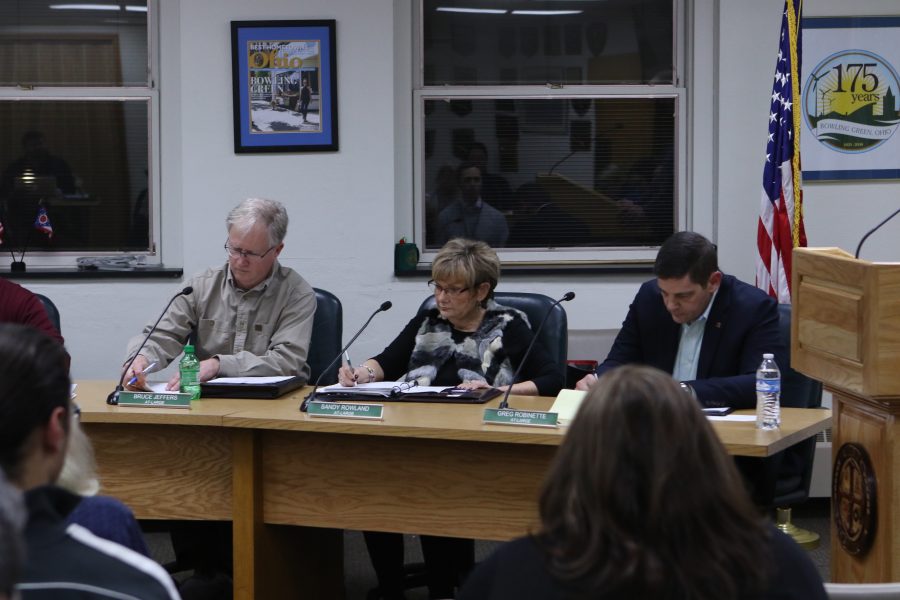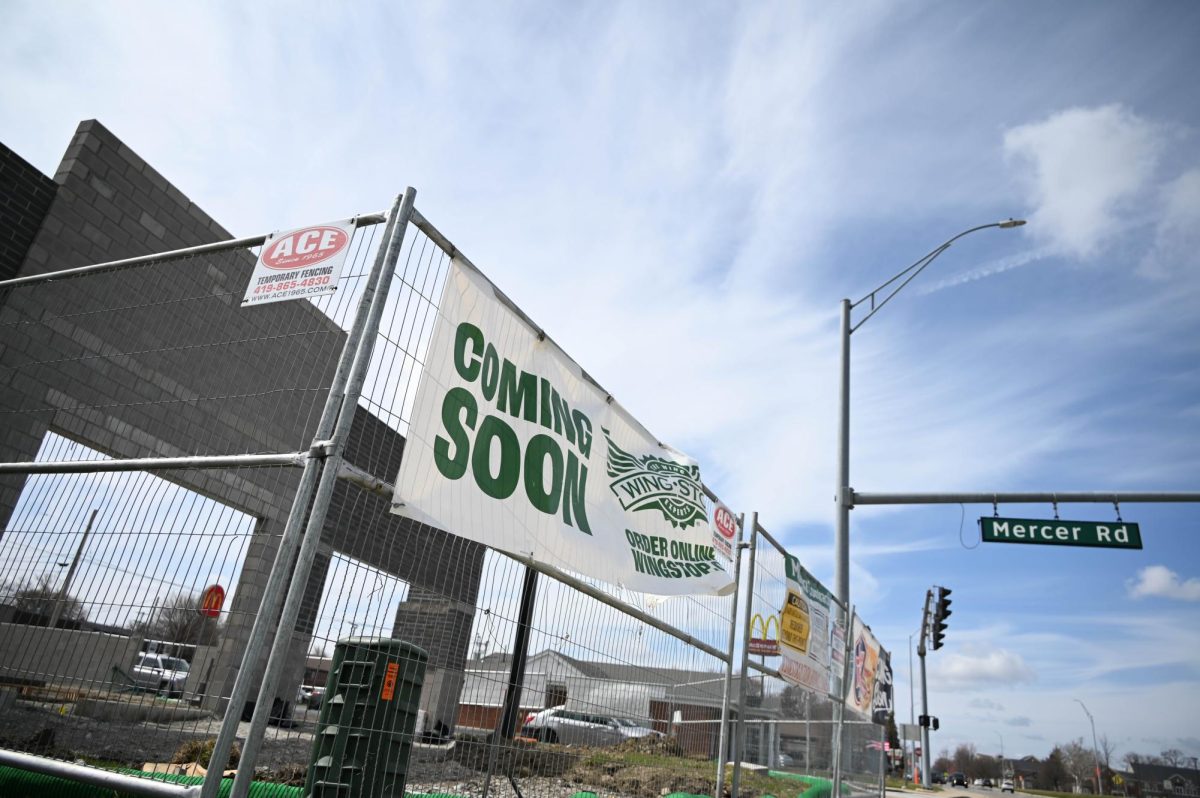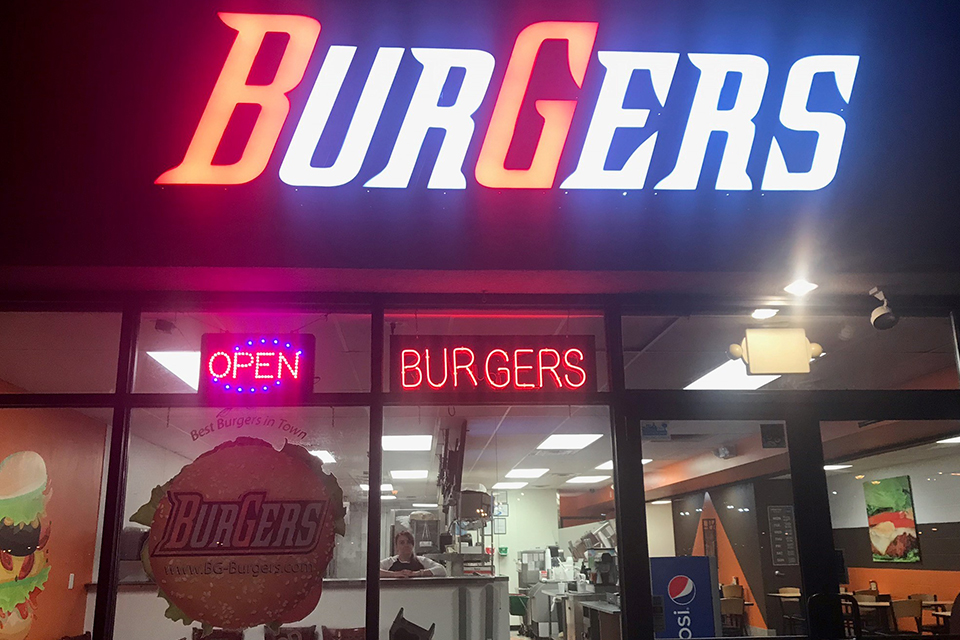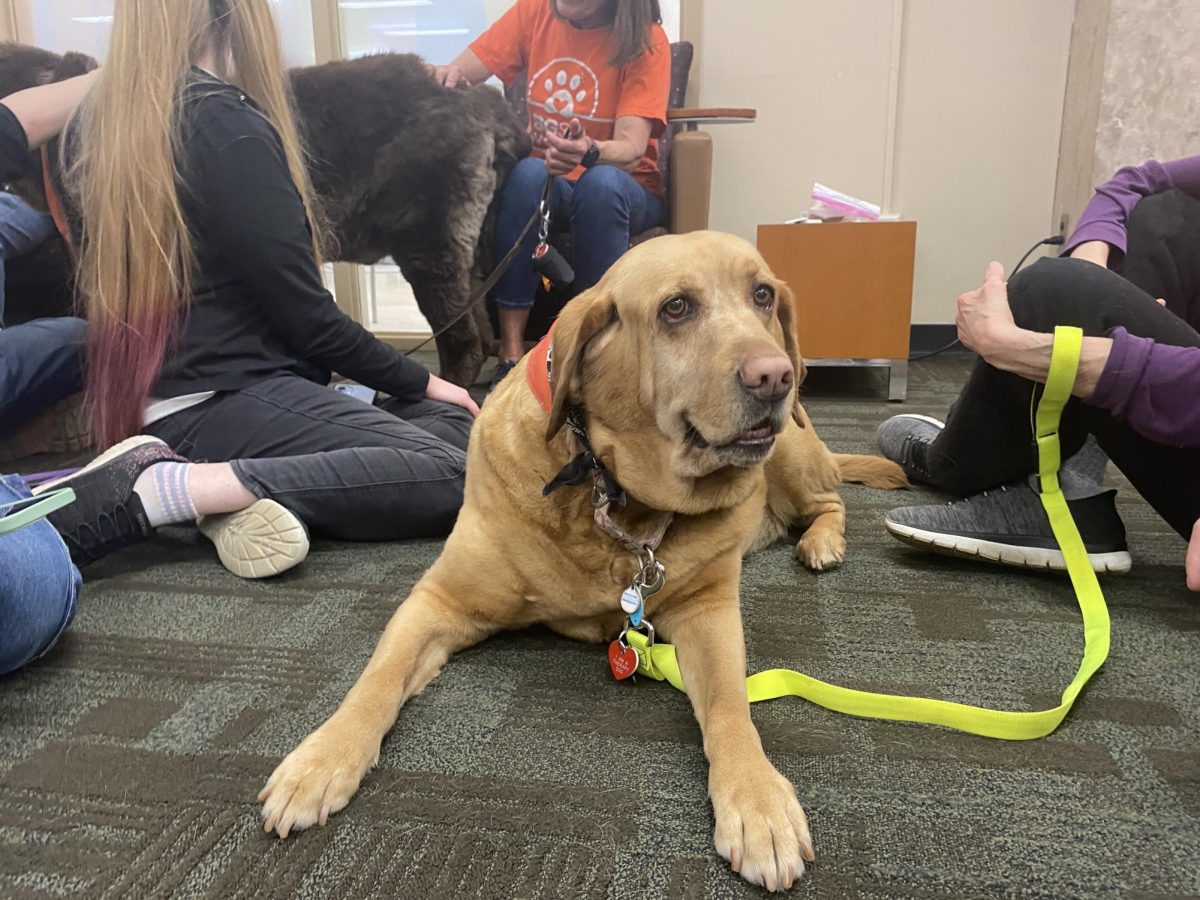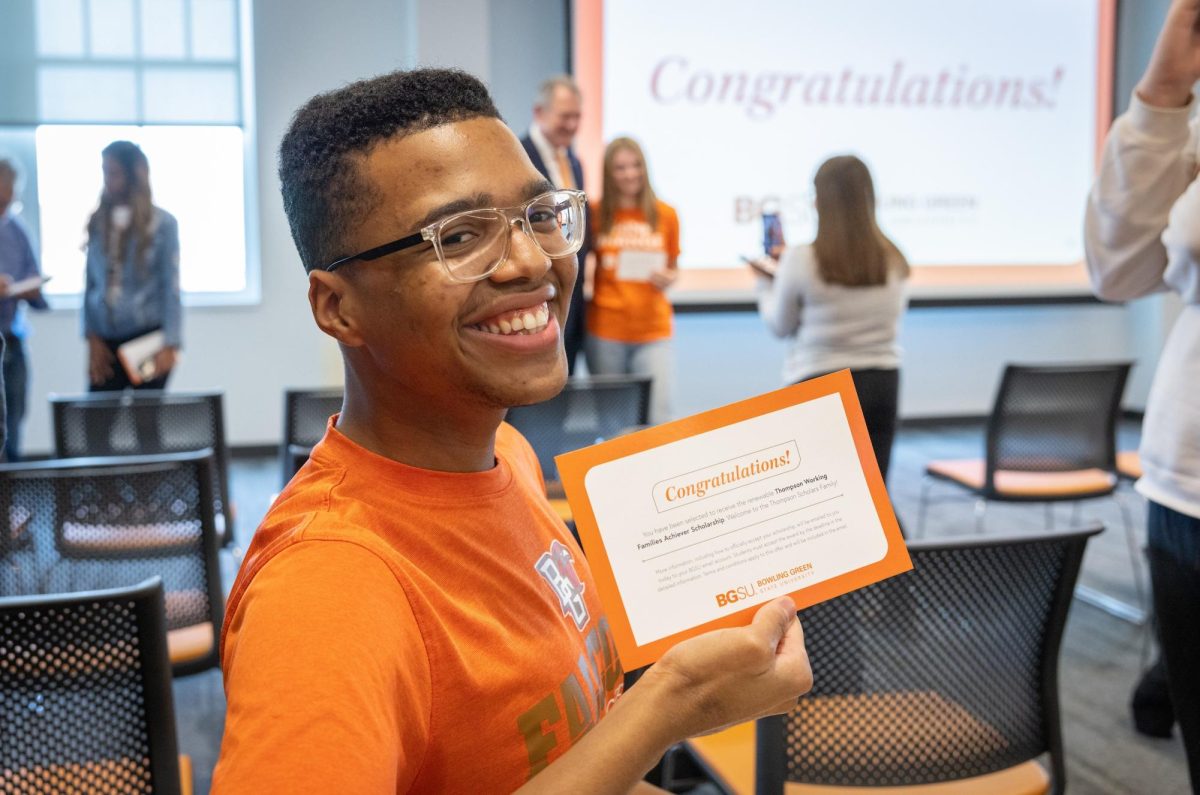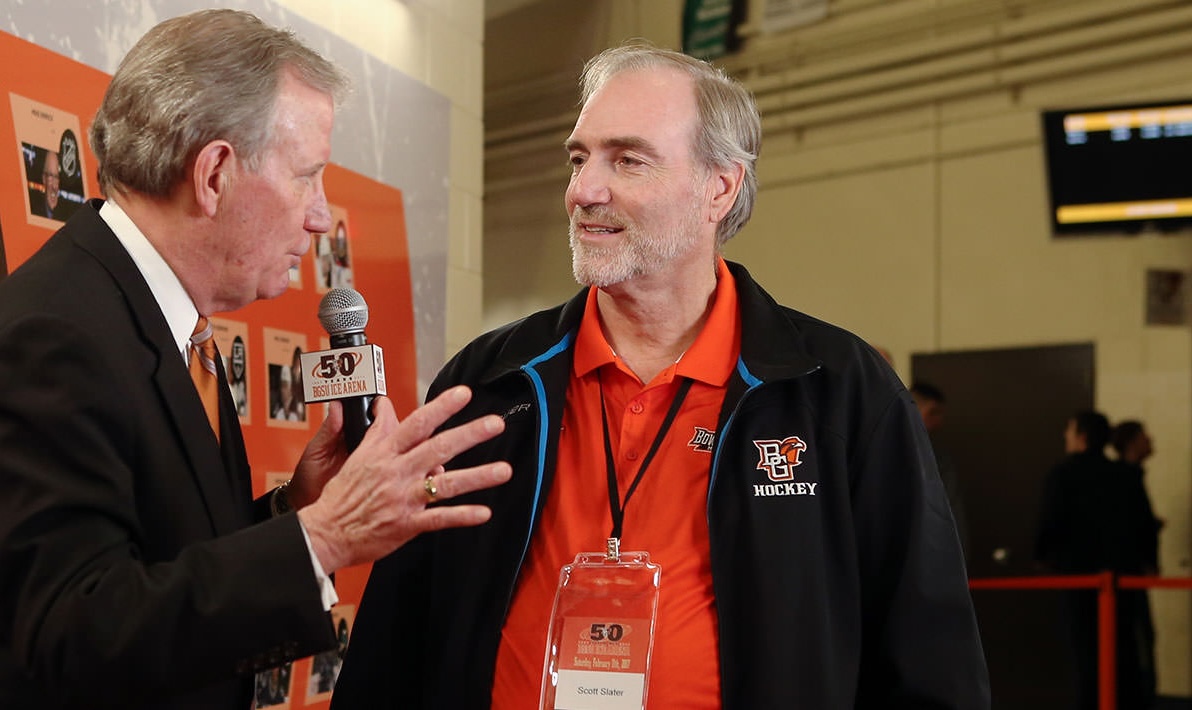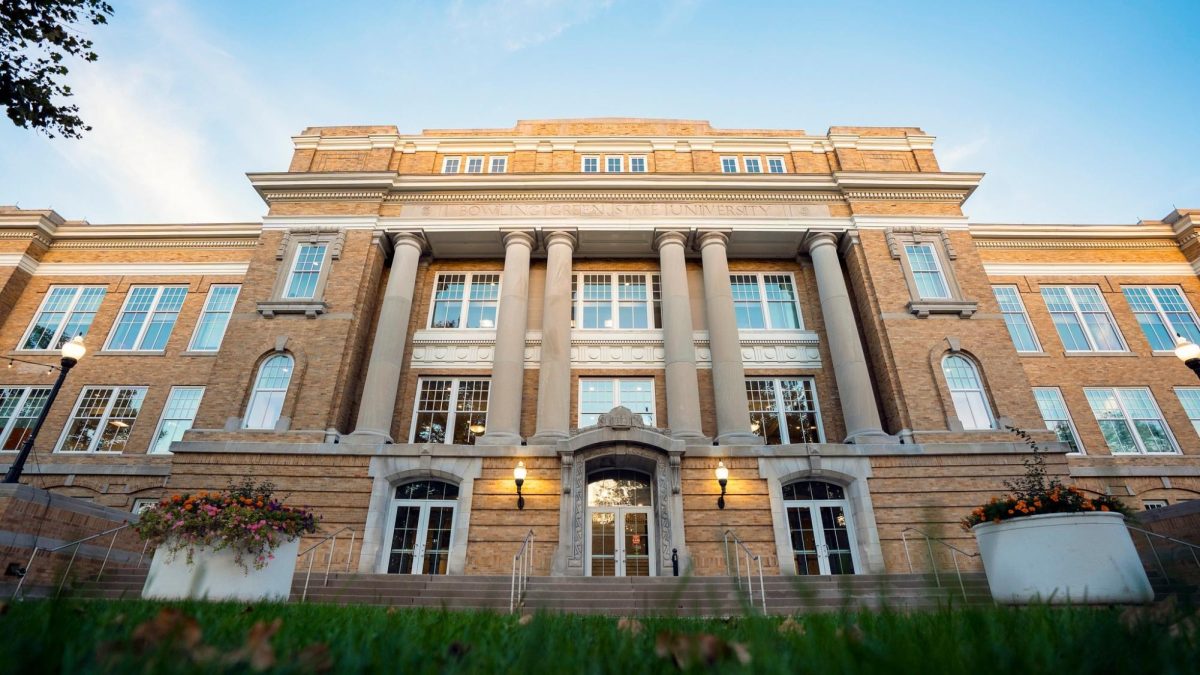Driving just above the speed limit near the city limits may no longer be a source of anxiety for community members.
Bowling Green City Council voted unanimously to raise speed limits from 35 to 45 mph on the east and west ends of Poe Road in an evening meeting April 2.
Areas on the road affected by the change run between Mercer Road and North College Drive and between Lafayette Boulevard and the city’s corporate limits.
The decision to change the speed limits came from a need to better follow Ohio Department of Transportation regulations, Assistant Municipal Administrator Joe Fawcett said. “It’s a typical type of legislation coming out of a municipality,” Fawcett said about the law’s passage.
He said the areas were chosen for heightened limits in part because the town’s Traffic Commission deemed they were far enough away from the city’s business center. Typically, the farther a road is from business areas, the higher the limit; though a 35 mph limit for areas just outside the district is common, retaining that limit in rural areas near city limits without an increase is not.
Additionally, he said the city had run studies detailing how average drivers operated in these areas to determine whether they should face change.
The studies found that 85 percent of recorded motorists drove at around 45 mph through these sections of Poe Road, which later became the target limit. Bowling Green, like many other Ohio towns, uses this 85th percentile as a guide because ODOT considers it an indication of what speed most drivers are comfortable with going.
Though voting showed unanimous Council favor for the law, discussion revealed some concerns with the plan.
A citizen utilizing lobby time in the early part of the meeting suggested Legacy Circle, just west Lafayette Boulevard, be the starting point to the new 45 mph area on West Poe Road. He cited worry about enabling higher speeds and the recent appearance of several immobilized cars near the intersection of West Poe and Lafayette, which he said was caused by speeding motorists, as his reason to want the different limit area.
William Herald, council member for the 4th Ward, asked about the possibility of changing the western area’s starting point to Legacy Circle after the citizen’s request, but Fawcett said the difference between the roads’ distances from the city limits was too small to worry about. Fawcett also said the studies accounted for speeds around Legacy Circle, and that average speeds did not appear to change much between the two options.
Herald voted for the legislation, but requested the Council to revisit the matter later to determine if the sizes of the speed limit areas or their speed limits needed editing.
The council also voted to contract businesses to replace rooms at the Water Pollution Control Facility and improve the city’s west-side water tower. In addition, it voted to adopt amendments to a citizen participation plan spearheaded by the 1st Ward council member, Daniel Gordon’s, Community Improvement Committee and to clean Department of Safety uniforms through contracted businesses.
Council Member At Large Greg Robinette also supplied updates to his work on the Community Action Plan, a property development project on the east end of town he said “lays out an opportunity for those specific areas” to engage in development pushed by a colloboration between Council members and citizens. He said that he and his Planning, Zoning and Economic Development Committee wanted to hear more plans from the rest of Council for the plan before putting it forward for approval.
Robinette specifically asked members to apply priority to their potential projects, to give them long, short or mid-size designations to better give his committee ideas about what to address first. He wants them to be ranked for next week’s City Council meeting so he can “pare (the plan) down a bit.”
Mayor Richard Edwards spoke during the meeting as well, announcing that the city earned the designation as an Ohio “tree city” for the 38th year in a row. He also announced April as the city’s Fair Housing Month and praised the Human Relation Commission’s Margaret Montague, who will leave city employment in May after working for years to improve fair housing in the community.
Mary Hinkelman of Downtown BG also announced her group’s various plans for businesses during Art Walk, which will happen April 28, and Herald said research had begun on finding new businesses to take up space in downtown buildings.
The next City Council meeting is planned for April 16 at 7 p.m. in the city’s government building.


